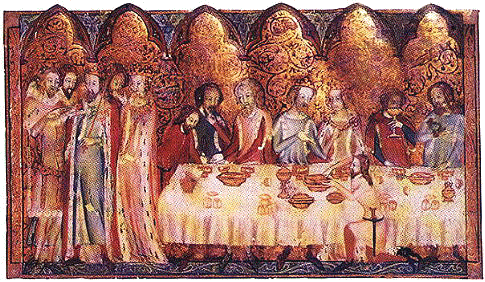Medieval Christmas
Existing elements of pagan midwinter rites fused with the developing theology of Christmas in an appeal to the senses of both sacred and lay.

As the European winter deepens the course of the sun gets nearer the southern horizon until it seems to stand still for a few days, before slowly rising again to usher in the spring. Ancient peoples were of course aware of this phenomenon and the Romans, from their words for 'sun' and 'stand still', called it solstitium, source of our word 'solstice'. By the Julian calendar, the system of months and days we still use (first devised in 46 BC on orders from Julius Caesar), the winter solstice was originally dated December 25th.





